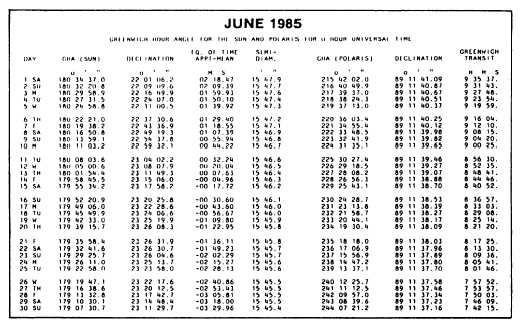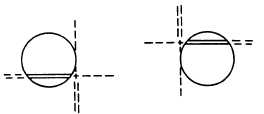Table 15-5.—GHA for the Sun and Polaris for O Hours Universal Time
Now that you know how to compute for the GHA
and eventually the LHA, the declination of the sun, and
the latitude and longitude of your location, you are ready
for the field procedure for determining the azimuth of a
line.
Field Procedure
Horizontal angles from a line to the sun are obtained
from direct and reverse pointings taken on the backssght
mark of the sun. It is suggested that repeating theodolites
be used as directional instruments, with the sighting
sequence being as follows: direct on mark direct on sun,
reverse on sun, and reverse on mark. Times are recorded
for each pointing on the sun. Since a large difference
usually exists in vertical angles between the backsight
mark and the sun, it is imperative that both direct and
reverse pointings be taken to eliminate instrument
errors.
WARNING
DIRECT VIEWING OF THE SUN
WITHOUT A PROPER FILTER WILL
CAUSE SERIOUS EYE DAMAGE.
You must NOT observe the sun directly through the
telescope without using an eyepiece or objective lens
filter. If you do not have a filter, you can project the
image of the sun and the cross hairs of the instrument
onto a blank white surface held approximately 1 foot
behind the eyepiece. The eyepiece and the telescope
focus must be adjusted to obtain a sharp image. Usually
only that position of the cross hair system situated within
the sun’s image is clearly visible. Although this method
of sun observation works, viewing the sun with the aid
of a falter is more convenient and slightly improves
pointing accuracies. (When using a total-station
instrument, you must use an objective lens filter to
protect the electronic distance meter (EDM)
components.)
Accurate pointings of the telescope cross hairs in
the center of the sun is impractical. Rather than pointing
to the center, you may take direct and reverse pointings
on opposite edges (fig. 15-13). Pointings are made with
the single portion of the vertical cross hair without
regard to the location of the horizontal cross hair. You
point the trailing edge of the sun by allowing it to move
into the vertical cross hair. You point the leading edge
by moving the vertical cross hair forward until the cross
Figure 15-13.—Pointing the sun.
15-19




